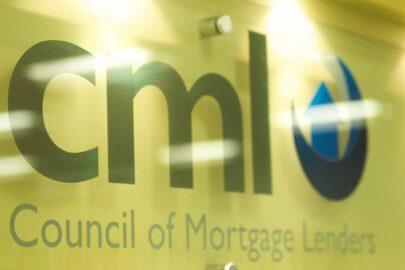The Council of Mortgage Lenders (CML) has reported that homeowner house purchase lending totalled £11.6bn in December, up 5% on November and 3% on December 2015.
This came to 63,600 loans, up 5% on November and 0.2% on December 2015.
First-time buyers borrowed £5.1bn for homeowner house purchase, up 9% on November and 13% on December 2015. This totalled 32,000 loans, up 7% month-on-month and 8% year-on-year.
Meanwhile, homemovers borrowed £6.5bn, up 3% on November but down 3% year-on-year. This totalled 31,600 loans, up 3% month-on-month but down 7% compared to December 2015.
Homeowner remortgage activity was down 21% by volume and by value compared to November. Compared to December 2015, remortgage lending was up 7% by volume and by value.
Gross buy-to-let saw month-on-month decreases, down 15% by volume and 7% by value. Compared to December 2015, the number of loans decreased 21% and the value of these loans decreased 18%.
The CML said that homeowner house purchase lending fell in the fourth quarter to £33.1bn, down 3% on the third quarter and 2% on the same quarter 2015. This totalled 182,000 loans, down 2% on the previous quarter and 4% on the final period of 2015.
First-time buyers took out 90,800 loans totalling £14.3bn to purchase homes. This was down 1% by volume and value on the third quarter, but up 4% by volume and 7% by value year-on-year.
Home movers took out 91,300 loans, down 4% quarter-on-quarter and 11% compared to the fourth quarter 2015. This came to £18.7bn, down 6% on quarter three and 9% year-on-year.
Home-owner remortgage activity came to £16.6bn, down 5% on the previous quarter but up 10% on the fourth quarter 2015. The number of remortgage loans came to 97,500, down 3% on the third quarter but up 9% on the same quarter in 2015.
Gross buy-to-let lending decreased to £6bn, down 2% on the previous quarter and 3% on the same quarter in 2015. This totalled 57,400 loans, up 2% quarter-on-quarter but down 20% year-on-year.
The CML also said that, in 2016, homebuyers borrowed £127.7bn in 2016, up 7% on 2015. This came to 698,900 loans, up 3% on 2015.
First-time buyers borrowed £53.2bn for home-owner house purchase in 2016, up 13% on 2015. This totalled 338,900 loans, up 8% from the previous year. First-time buyer borrowed more in 2016 than any other year since our records began in 1974.
Home movers took out 360,300 loans, down 2% on 2015, but the amount borrowed totalled £74.3bn which was up 3% on 2015.
Home-owner remortgage activity was up 14% by volume and 20% by value compared to 2015. The number of remortgage loans was at its highest since 2009.
Gross buy-to-let also saw year-on-year increases, up 3% by volume and 7% by value, with remortgage business accounting for nearly two thirds of the total.
Paul Smee, director general of the CML, said: “2016 could have been a potentially destabilising year of regulatory and political change, but the mortgage market has been resilient and adaptable. Home-owner house purchase lending increased, though the buy-to-let sector’s positive lending performance has been driven primarily by remortgaging.
“We do not expect the market volumes to show a year-on-year increase in 2017 instead remain similar to that achieved in 2016.”
Jeremy Duncombe, director of Legal & General Mortgage Club, added: “After a turbulent year politically, the mortgage market still managed to end the year on a strong note. In the second half of 2016 remortgaging dominated the market as both homeowners and landlords took advantage of record low interest rates. It’s also reassuring to note the year-on-year increase in first-time buyer activity as more people were able to take their first steps onto the property ladder.
“That said, these figures highlight the supply and demand gap, which continues to support runaway house price inflation. For as long as demand outstrips supply, this trend will continue. The government’s recent Housing White Paper has promised some solutions, including help for smaller developers, but it still feels evolutionary not revolutionary. The topics of stamp duty, planning and the green belt may need to be looked at again if we really want to fix our broken housing market.”
